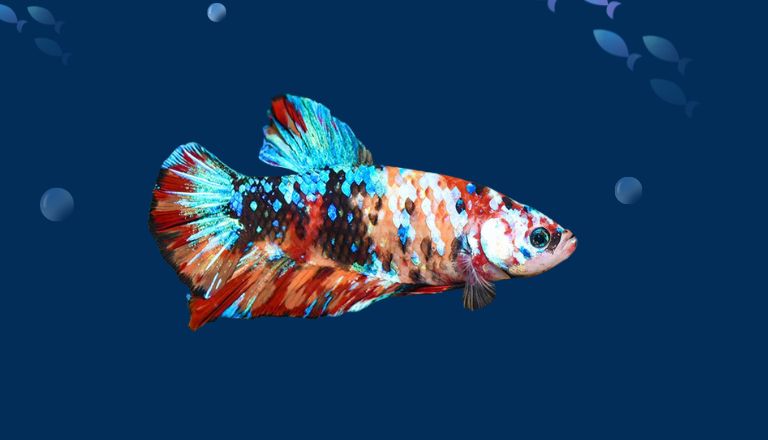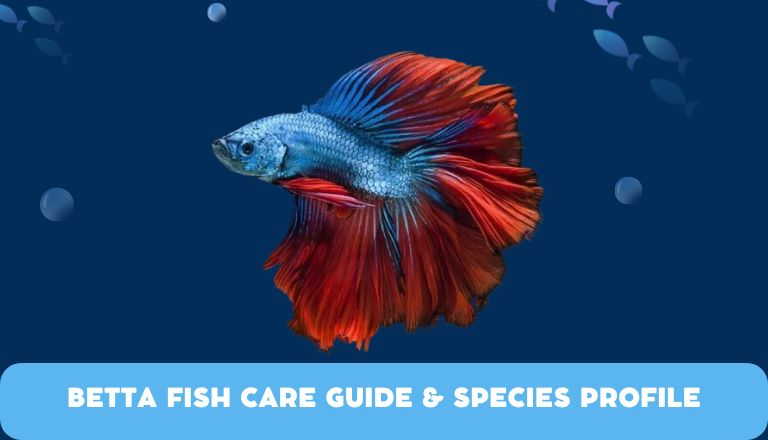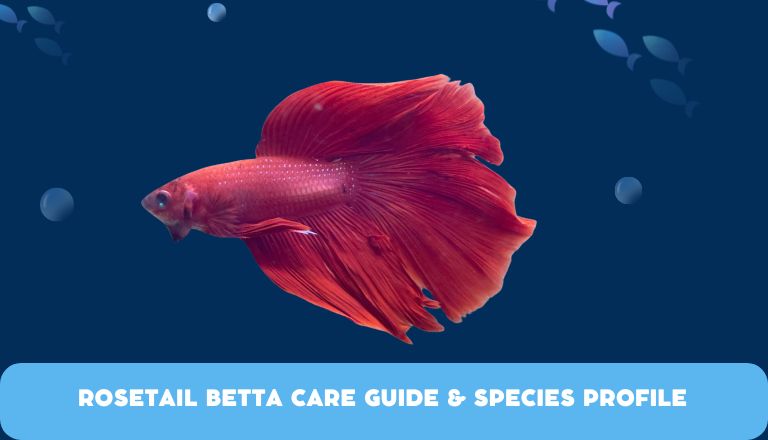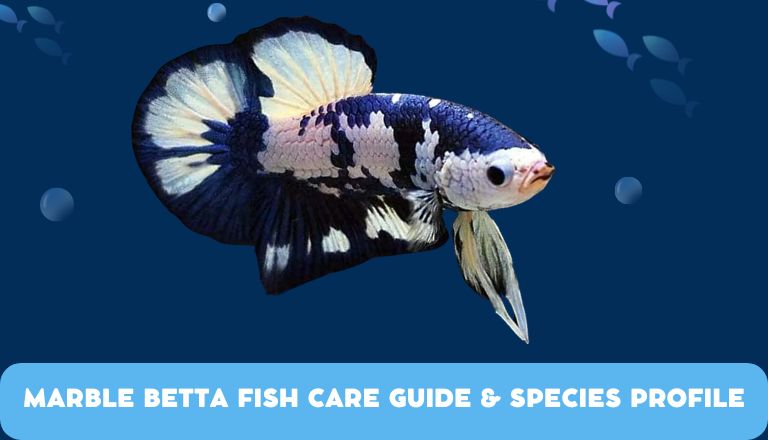The Giant Betta Fish Complete Care Guide 2024
When I first laid eyes on the majestic Giant Betta Fish, I was captivated by its vibrant colors and flowing fins. These aquatic wonders are not just larger versions of the Betta; they possess a unique charm that draws in fish enthusiasts.
In this complete care guide, I’ll share everything I’ve learned about Giant Betta Fish—from their ideal habitat to proper nutrition and tank mates. Whether you’re considering bringing one home or you’re already an owner looking for tips, this guide is here to ensure your Giant Betta thrives in all its glory. Get ready to dive into the fascinating world of these finned giants!
Giant Betta Fish Facts & Overview
Giant Bettas are also known as Betta macrostoma. They have vibrant colors and flowing fins. This fascinating variant is a larger version of Bettas. The Giant Betta has captured the attention of fish enthusiasts and aquarists with its striking appearance and captivating behavior.
They originate from the lush waters of Southeast Asia, particularly Thailand. Giant Bettas are a product of selective breeding aimed at enhancing their size. Unlike other Bettas, which typically reach up to 3 inches in length, these giants can grow to impressive sizes exceeding 6 inches.
| Care Level | Moderate |
| Temperament | Aggressive |
| Color | Blue, green, orange, red, yellow, purple |
| Lifespan | 2-3 years |
| Size | Up to 6 inches |
| Diet | Carnivore |
| Family | Osphronemidae |
| Minimum Tank Size | 20 gallons |
| Tank Set-Up | Freshwater, mild current, 76° Fahrenheit |
| Compatibility | Other small freshwater fish |
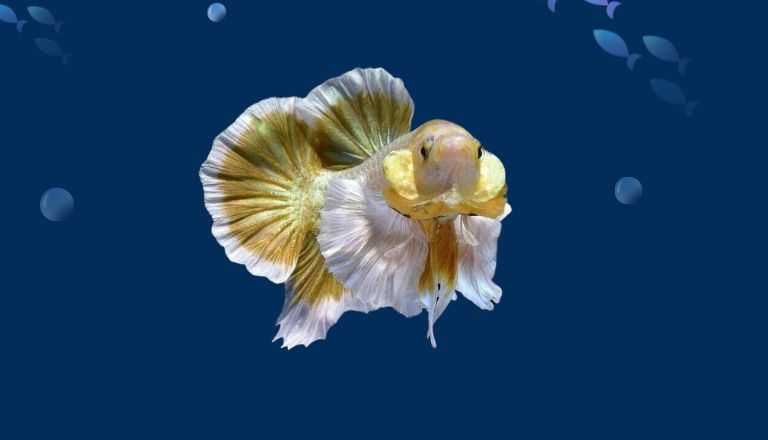
Typical Behavior
Giant Bettas exhibit intriguing behavior. Unlike common bettas, these fish prefer a solitary existence. They can tolerate the presence of other fish, especially in larger tanks. Conflicts can arise if they feel their territory is threatened. They are quite curious and interactive with their environment, exploring every nook and cranny of their habitat. Social interactions among males can be minimal but intense.
Appearance
Giant Bettas are strikingly beautiful. They have vibrant colors that range from deep blues to eye-catching reds and rich yellows. Their elongated bodies grow larger than standard bettas. The fins on a Giant Betta are impressive; they flow gracefully like silk ribbons when swimming or flaring. This spectacular display is not just for show—it’s part of their communication repertoire that conveys emotions such as stress or excitement.
Habitat and Tank Conditions
Giant Betta fish thrive in specific habitat conditions that mimic their natural environment. These stunning creatures are found in rice paddies, swamps, and slow-moving streams. To replicate their habitat at home, create a tank that has plenty of hiding spots using plants and decorations. This not only provides security for your Betta but also encourages natural behaviors like exploring and nesting.
Giant Bettas enjoy having places where they can hide and feel safe from potential threats. With the right conditions, these beautiful fish can flourish, showcasing their unique personalities while keeping your aquarium remarkably lively!
Tank Conditions
Create the ideal tank conditions for a Giant Betta fish to thrive. First and foremost, water quality is essential; these fish thrive in clean, well-filtered environments. Add a filtration system that gently circulates the water to prevent stress and provide a stable habitat. Maintain consistent water parameters—temperature should ideally range between 78°F and 82°F (25°C to 28°C), while pH levels should sit around 6.5 to 7.5. Regular testing can ensure these conditions remain optimal.
Provide hiding spots with live plants or decorations that enrich their environment and reduce stress by giving them places to retreat when they feel threatened.
Tank Size
Unlike standard Bettas that can thrive in smaller tanks, these fish need room to showcase their impressive size and vibrant personalities. A minimum of 20 gallons is recommended for one Giant Betta. It allows them plenty of swimming space and reduces stress. This larger environment promotes better health and mimics a more natural habitat where they can explore.
Tank Mates
Giant bettas require companions that won’t provoke them or nip at their extravagant tails. Peaceful species like corydoras catfish can thrive in the same environment, as they stay near the bottom and are non-aggressive. These little scavengers keep the tank clean and add movement and interest without encroaching on your betta’s territory.
Another great option is snails—such as nerite or mystery snails—which occupy vertical space and won’t directly interfere with your betta’s lifestyle. They feed on algae and leftover food, enhancing the habitat’s overall health without stirring conflict.
Diet
These vibrant fish thrive on a diet that mimics their natural habitat. In the wild, they consume a mix of insects, crustaceans, and plant matter. Replicate this balance in your aquarium. High-quality pellets designed for bettas can serve as a staple food source.
Supplement their diet with frozen or live foods like bloodworms and brine shrimp. This enhances their color and keeps them active and healthy.
Incorporate plant-based food into their meals. They are primarily carnivorous. Offer them small amounts of blanched spinach or spirulina. This can improve digestion and provide essential nutrients.
Varying their diet helps prevent boredom and encourages natural foraging behaviors that are important for mental stimulation. Keep an eye on portion sizes; overfeeding can lead to obesity and health issues in these stunning fish.
Care
Caring for Giant Betta fish can be a rewarding experience. Giant Bettas can grow up to 6 inches long, which means they require adequate space to thrive. A minimum of a 20-gallon tank is recommended, with plenty of hiding spots created through plants and decorations. This helps them feel secure and reduces stress levels.
Water quality plays a crucial role in maintaining the well-being of Giant Bettas. Regular water changes and monitoring parameters like pH levels and temperature are essential; these fish prefer slightly warmer waters.
Breeding the Giant Betta
To begin this journey, make sure you have healthy parent fish. Choose specimens with complementary traits—such as fin extensions or vivid colorations—to enhance the likelihood of producing stunning offspring. Maintain optimal water conditions with slightly acidic pH levels and stable temperatures around 78-80°F to create an ideal breeding environment.
Once you’ve paired your bettas, observe their courtship behavior closely. Males will build bubble nests before coaxing females to join in the dance of mating. This phase can be mesmerizing and speaks volumes about their personalities—males displaying their fins proudly while engaging in playful displays of dominance. After spawning occurs, remove the female promptly to avoid aggression from the male.
As fry emerge days later, feed them with finely crushed flakes or specialized micro pellets to ensure they receive adequate nutrition for growth. Patience is key during this stage; keep conditions stress-free.
Conclusion
Caring for your Giant Betta fish can be a rewarding experience that enhances your aquarium. By providing the right tank size, water conditions, and a balanced diet, you can ensure your giant betta stays healthy and vibrant. Regularly maintain aquarium conditions and monitor their environment for their well-being. Keep an eye on their behavior for any signs of stress or illness. With the proper care, your Giant Betta fish will thrive, so take the plunge and start creating a beautiful home for your aquatic friend today!
FAQs
How Big does a Giant Betta get?
Giant bettas can grow significantly larger than standard betta fish. Giant bettas grow up to 4 to 6 inches long. Some exceptional individuals may even exceed this size.
Are Giant Bettas Healthy?
Giant bettas are a larger variety of the common betta fish. When kept in the right conditions, giant bettas can be healthy and thrive. Provide them with a spacious tank that has clean water, proper filtration, and suitable temperature to keep them healthy.
Can You keep a Giant Betta in a 5-Gallon Tank?
Keeping a giant betta in a 5-gallon tank is possible, but there are some important factors to consider. While a 5-gallon tank provides enough space for one giant betta, ensure that the tank is well-maintained and properly set up.
Are Giant Bettas more Aggressive?
Giant bettas are indeed more aggressive than regular bettas. This increased aggression is largely due to their breeding history. Originally bred for fighting, these fish have retained some of those traits, making them more territorial and prone to conflicts with other fish. When kept in the same tank, they may display aggressive behaviors like flaring their fins or chasing each other.

